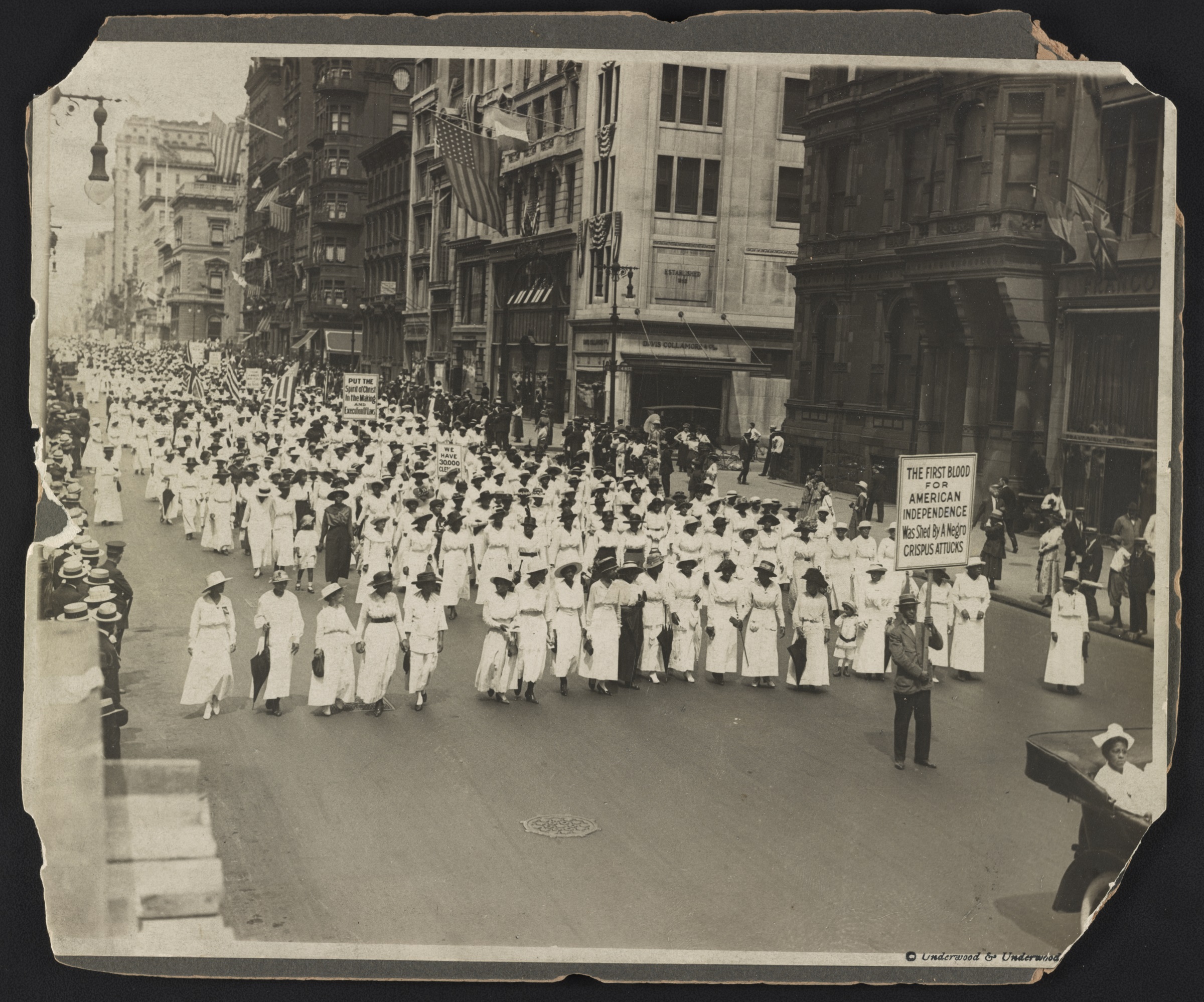Background
The National Association for the Advancement of Colored People (NAACP) was created in 1909 after an assault by whites on the Black community in Springfield, Illinois. The violence in Abraham Lincoln’s hometown convinced many that Jim Crow was not simply a Southern problem, and it provided a rare platform for interracial cooperation. The call for action came from New Yorker William English Walling. Walling and other white progressives, including suffragists and reformers Mary White Ovington and Florence Kellye, joined with Black activists, including W.E.B. Du Bois and Mary Church Terrell, to form the NAACP. They demanded that the civil and voting rights guaranteed by the Fourteenth and Fifteenth Amendments be protected.
About the Document
On July 1, 1917, racial tensions exploded in East St. Louis, Illinois, sparked by competition for jobs and a recent spate of shootings. A white mob set fire to the city’s Black neighborhoods, and lynched, shot, or burned alive as many as 200 African Americans. Thousands more were displaced and left the city. In response to this and other spasms of white violence, the NAACP organized a silent march down New York’s Fifth Avenue. Nearly 10,000 people participated, silent but for the sound of muffled drums. Children led the way, followed by groups of women in white dresses and men in dark suits. Marchers held signs protesting racial violence and demanding fair treatment: “We have fought for the liberty of white Americans in six wars; our reward is East St. Louis.”
Discussion Questions
- What tactics did the parade organizers and marchers use?
- Who is in this photo, and why?
- What messages were they sending? Who were they trying to reach?







